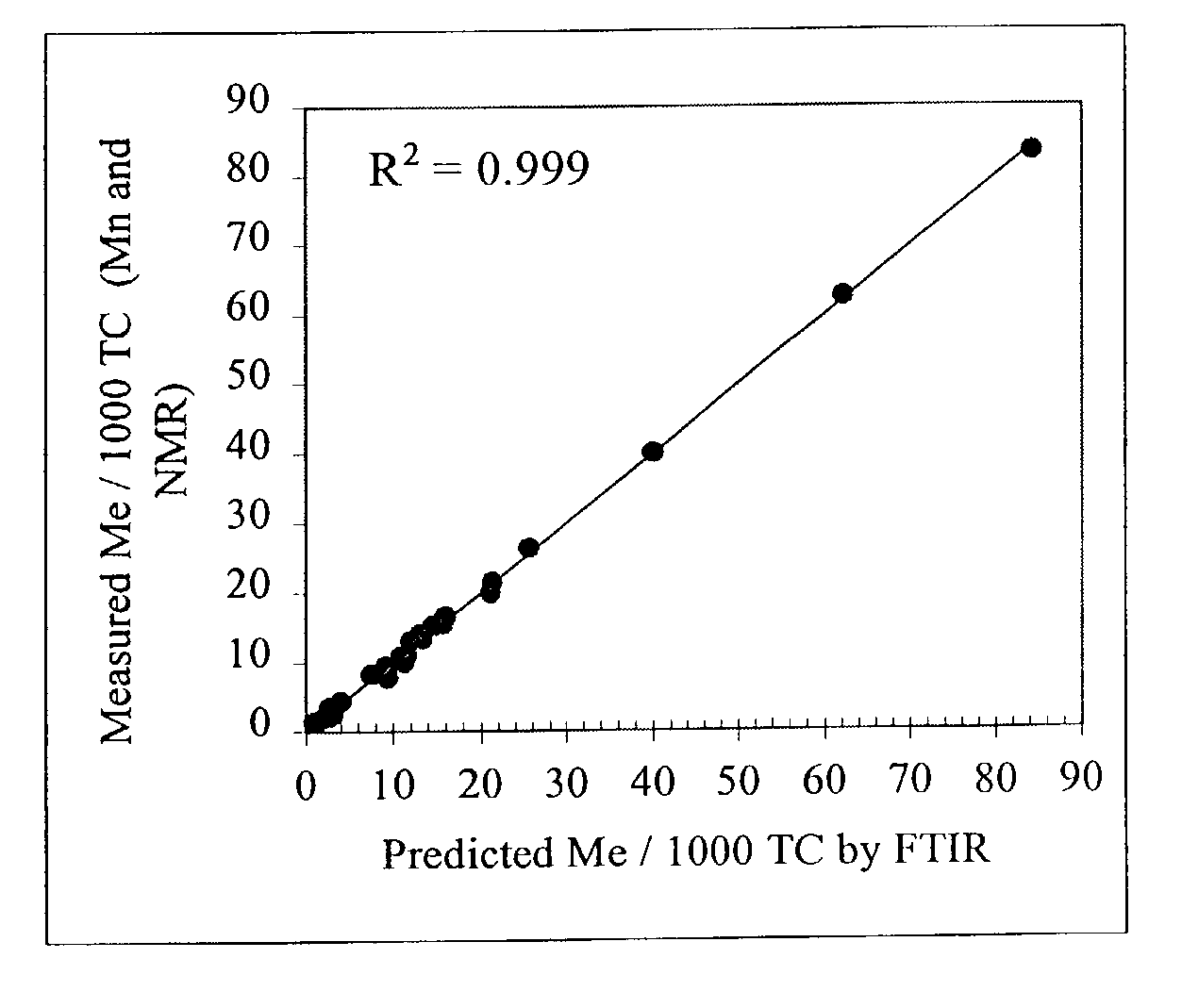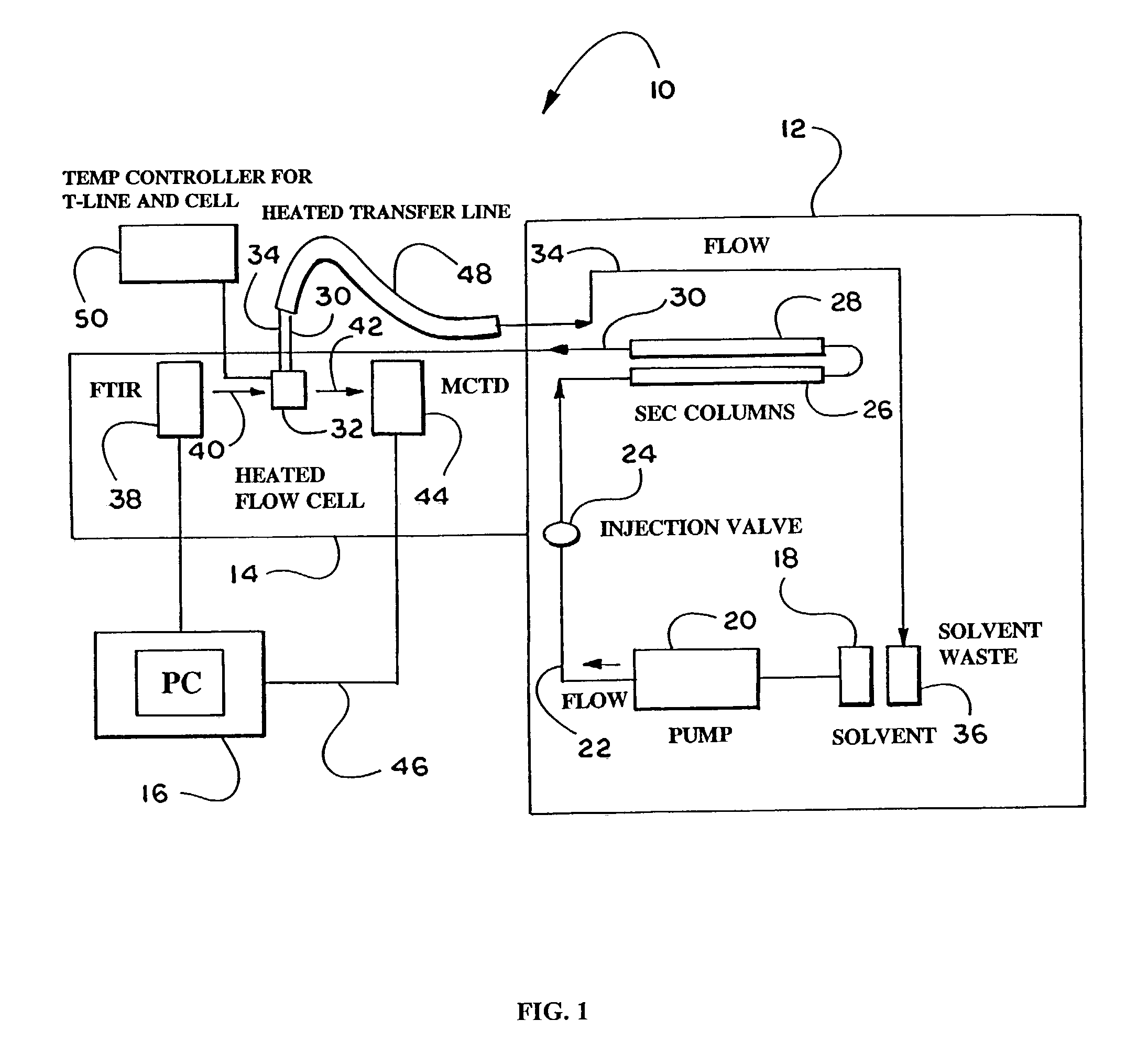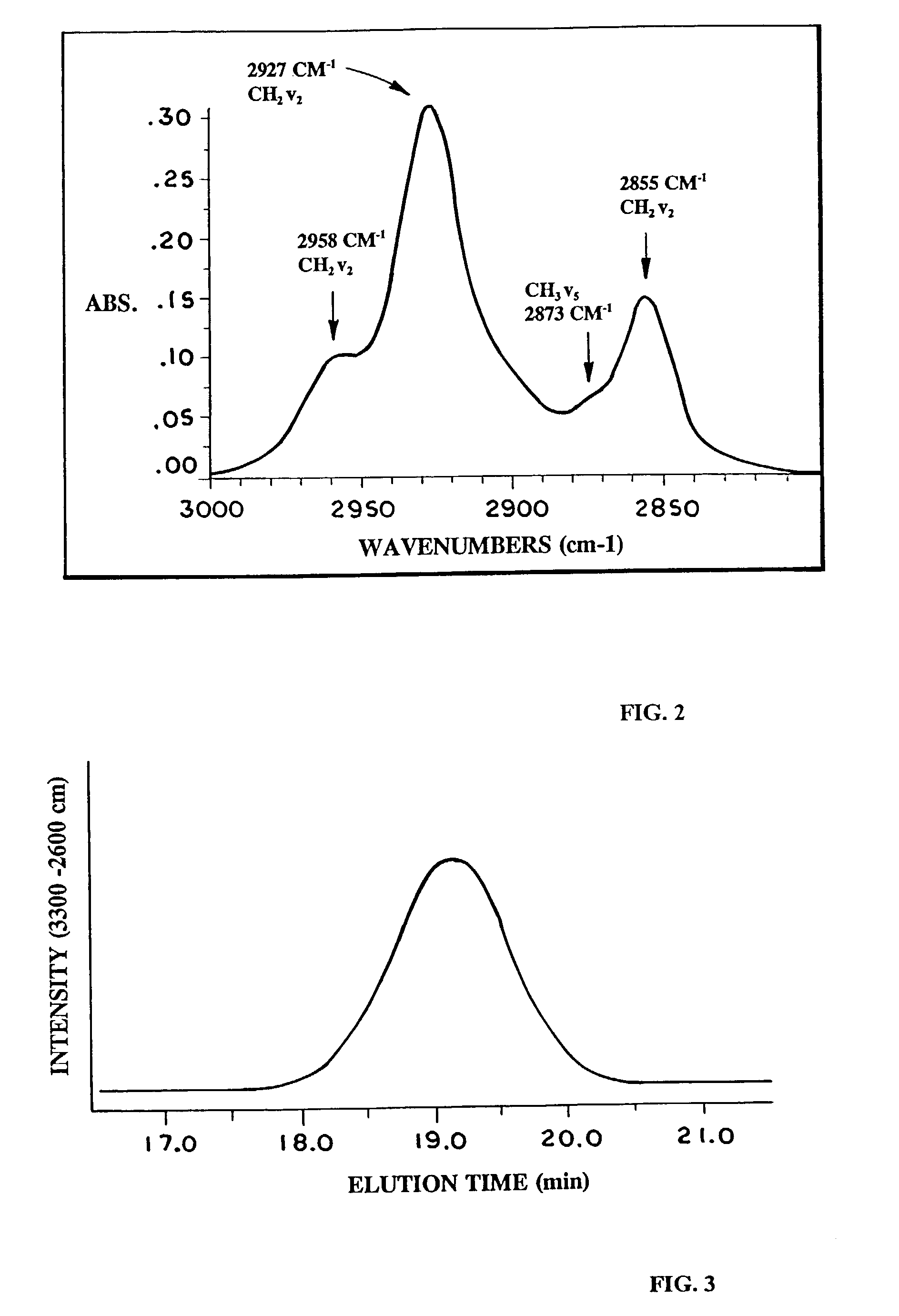Measurement of short chain branching in olefin copolymers using chemometric analysis
a technology of olefin copolymer and chemometric analysis, which is applied in the direction of color/spectral properties measurement, material analysis, instruments, etc., can solve the problems of not allowing one to determine the degree of branching, 895 patent does not disclose using size-exclusion chromatography, etc., and achieves the degree of short-chain branching analysis in a sample. , the effect of less effort and relatively fast analysis
- Summary
- Abstract
- Description
- Claims
- Application Information
AI Technical Summary
Benefits of technology
Problems solved by technology
Method used
Image
Examples
example 1
[0105]SEC-FT-IR Measurements of Training Samples
[0106]25 narrow molecular weight, solvent gradient fractions of ethylene 1-butene, ethylene 1-hexene, ethylene 1-octene copolymer and polyethylene homopolymers, as well as low molecular weight alkanes, were prepared for use as training samples. The samples had a molecular weight distribution, “MWD”, of from about 1.1 to 1.3. The total methyl content of these samples ranged from 1.4 to 82.7 methyl groups per 1000 total carbons.
[0107]The methyl contents of the samples were calculated from their number average molecular weights (Mn) or measured using 13C-NMR spectroscopy. The 13C-NMR spectra were obtained on 15 wt. % samples in TCB using a 500 MHz Varian Unity Spectrometer run at 125° C. Methyl content per 1000 carbons by NMR was obtained by multiplying (×1000) the ratio of branching signals to total signal intensity.
[0108]The training samples were dissolved in trichlorobenzene (TCB) containing 0.034 wt. % BHT (a preservative) by heating ...
example 2
[0118]Determination of Branching in a Sample From a Polymerization Process
[0119]The SCBD of a solvent gradient fraction of a sample from a process stream was measured across the MWD by correlating the SEC / FT-IR spectra obtained from the process stream sample with its SCBD, using the chemometric calibration method used and the correlation data obtained in Example 1. The results were compared to the SCB levels measured by NMR in cross-fractionated samples of the same SG fraction. As shown for this example, a good correlation was found to exist between the two methods. (See FIG. 7.) Both methods show the expected increase in branch content with increasing molecular weight based on the solvent / non-solvent pair used for the solvent gradient fractionation. Although the rise in branching level in this sample was slight (˜10 to 12 Me / 1000 TC), the trend could be observed using the SEC-FT-IR method.
example 3
[0120]In this example, a low molecular weight homopolymer was mixed with a high molecular weight branched ethylene 1-hexene copolymer. Both resins were known to contain only methyl chain ends. The results are shown in FIG. 11. The SEC trace of the mixture is shown by the plot 70. The plot 72 represents the homopolymer contribution to the plot 70, and the plot 74 represents the branched copolymer contribution to the plot 70. The data points represent the short chain branching distribution of the sample, as a function of molecular weight, as determined by the present chemometric method.
[0121]The SCB levels and corresponding molecular weight results obtained from the SEC-FTIR analysis correlated well with the expected results for this sample. That is, branching was seen in the upper molecular weight portion of the sample. This example also illustrates the power of this method to elucidate the polymer architecture in multi-modal systems.
PUM
| Property | Measurement | Unit |
|---|---|---|
| molecular weight distribution | aaaaa | aaaaa |
| temperatures | aaaaa | aaaaa |
| wavenumber | aaaaa | aaaaa |
Abstract
Description
Claims
Application Information
 Login to View More
Login to View More - R&D
- Intellectual Property
- Life Sciences
- Materials
- Tech Scout
- Unparalleled Data Quality
- Higher Quality Content
- 60% Fewer Hallucinations
Browse by: Latest US Patents, China's latest patents, Technical Efficacy Thesaurus, Application Domain, Technology Topic, Popular Technical Reports.
© 2025 PatSnap. All rights reserved.Legal|Privacy policy|Modern Slavery Act Transparency Statement|Sitemap|About US| Contact US: help@patsnap.com



